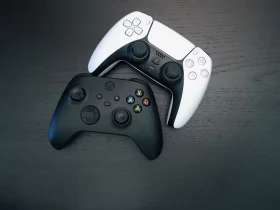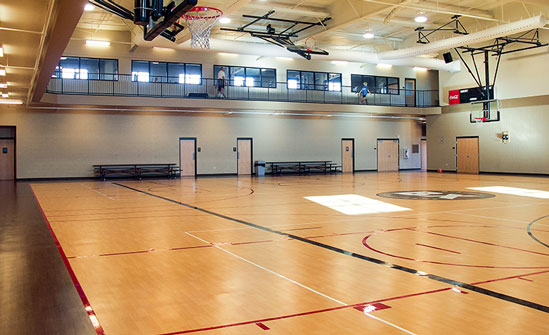Roused by an interest in weight reduction, physical and emotional well-being, and better mental functioning, Statistica gauges that 229.7 million Americans routinely take part in active work.
Simultaneously, there is a danger of injury related to sports and sporting exercises. Indeed, the U.S. Public safety Council reports that 3,727,615 trauma center visits were brought about by sports and sporting injuries from 2013 to 2020, with b-ball, football, and jungle gym equipment accounting for three of the best five top reasons for injury. While the conditions of injury differ, flooring surfaces are known to assume a critical part. Of interest, Loughborough University’s Sports Technology Institute played out a broad international review where 1,129 expert soccer competitors were studied. As revealed in Sports Medicine, 91% of these players accepted that the kind of state of the playing surface could increase their danger of injury and should be aware of Sports Equipment Suppliers.
Flooring Selection
Taken together, selecting the right flooring material for a sports/amusement office or jungle gym is a significant consideration.
While choosing an Indoor-outdoor Sports flooring suppliers are urged to assess the following key factors and questions:
- Installation. What is involved in installing the flooring framework. Will the maker install the framework or will the office be liable for the installation? Will the installation interaction cause off-gassing of unsafe toxins? How before long will the flooring be prepared for use after installation?
- Style. How significant is style? How could the flooring look under changed lighting conditions? How much should the flooring conceal soiling?
- Maintenance. What level of maintenance will the flooring require? How long and cost would the office be able to invest in maintaining the flooring? Can in-house staff handle minor fixes or will the producer should be brought in?
- Solidness. How long will the surface last? What kind of mileage will the framework suffer after some time and how much would it be able to be fixed? Will the arranged office use sway strength?
- Cost. Is the proprietor taking a more extended term, life cycle perspective on the expense? How much does installation and maintenance add to the price tag?
- Security. Does this floor meet the biomechanical needs of the competitors and clients? Is there legitimate cushioning for sway? Is it excessively elusive or not tricky enough? Are there any distensions that can cause a danger?
Execution. What are the exhibition standard levels for the office? Was the flooring framework intended for its intended use?
Key Performance Characteristics
While specifying flooring for sports offices and jungle gyms, it’s essential to consider these frameworks considering a few significant presentation measurements. Depending on essential and optional uses for the space, some presentation attributes will convey more weight in the assessment interaction.
For instance, for a running track, shock retention and power decrease are critical to assist with protecting the sprinter’s joints. In a jungle gym climate, perseverance/sturdiness and slip obstruction are high needs for the life span of the play region and the wellbeing of the kids.
Various significant execution attributes are:
- Bounce back – gauges what high a ball will bob in the wake of meaning for a story’s surface. In measuring the bounce back level of a b-ball, a baseline correlation is made to concrete. Consequently, 100 percent bounce back assesses the surface providing a similar degree of bounce back as concrete.
However not an authority test, one special method for seeking consolation that the flooring material will help athletic execution and lower dangers of activity-related injuries for youngsters is the egg drop test. When dropped at a stature of 1 m and 2 m, an egg will splatter on an EPDM floor. Alternately, when dropped on an expanded thermoplastic polyurethane surface, which incorporates an EPDM top layer and an eTPU sub-layer, in the two instances, the egg bobs as though it were a ball.
- Shock retention – measures the floor framework’s capacity to retain sway powers produced by the client. The more the surface can retain the effect, the less the client’s muscles and joints should assimilate. As a casing of reference, cement and black-top give practically zero power decrease for a sprinter, competitor or youngster playing in the recreation area. Consequently, they are not reasonable materials for exercise and play regions.
- Power decrease – is connected with shock retention and defined as how much power consumed by the surface in view of the surface’s capacity to diminish sway powers. This gives a degree of insurance and wellbeing for clients.
While power decrease is significant, it should be offset with energy compensation which returns some energy to the athlete to push the force along. Without energy compensation, the competitor will feel like he/she is running in sand.
With higher energy compensation, the floor will be tough, which is great for a weight room as the surface can more readily bear the effect of significant burdens hitting the floor by deflecting a portion of that energy. Notwithstanding, when the degree of energy compensation is too high, the surface offers diminished cushioning, making it less great for jungle gyms and increasing the danger of injury on sports fields.
- Slip opposition – is estimated by the coefficient of erosion on a jungle gym surface. The degree of contact should be low to the point of allowing sliding when critical level power is applied to the floor surface yet sufficiently high to forestall wild sliding.
- Elasticity – determines a flooring framework’s protection from breaking under the pressure stresses of being pulled separated.
- The extensive strength – measures the surface’s breaking yield strength under pressure.
- The prolongation at break – measures the flexibility, which is how much stretch contained in a material when taken to the point of breaking or tearing.
- A story material’s modulus of flexibility – is a determined worth in view of the proportion of the breaking/flexural strength when contrasted with the disfigurement at break. This worth is utilized to determine the overall inflexibility and strength of the material.
- Layered solidness – measures a flooring surface’s capacity to withstand temperature vacillations without shrinking or cracking.
- Sway obstruction – measures the capacity of a story framework to oppose cracking, chipping or dis-bonding under an effect load.


















